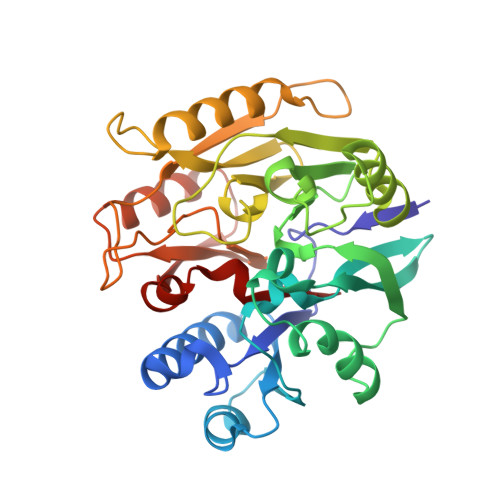Characterization and inactivation of an agmatine deiminase from Helicobacter pylori.
Jones, J.E., Causey, C.P., Lovelace, L., Knuckley, B., Flick, H., Lebioda, L., Thompson, P.R.(2010) Bioorg Chem 38: 62-73
- PubMed: 20036411
- DOI: https://doi.org/10.1016/j.bioorg.2009.11.004
- Primary Citation of Related Structures:
3HVM - PubMed Abstract:
Helicobacter pylori encodes a potential virulence factor, agmatine deiminase (HpAgD), which catalyzes the conversion of agmatine to N-carbamoyl putrescine (NCP) and ammonia - agmatine is decarboxylated arginine. Agmatine is an endogenous human cell signaling molecule that triggers the innate immune response in humans. Unlike H. pylori, humans do not encode an AgD; it is hypothesized that inhibition of this enzyme would increase the levels of agmatine, and thereby enhance the innate immune response. Taken together, these facts suggest that HpAgD is a potential drug target. Herein we describe the optimized expression, isolation, and purification of HpAgD (10-30 mg/L media). The initial kinetic characterization of this enzyme has also been performed. Additionally, the crystal structure of wild-type HpAgD has been determined at 2.1A resolution. This structure provides a molecular basis for the preferential deimination of agmatine, and identifies Asp198 as a key residue responsible for agmatine recognition, which has been confirmed experimentally. Information gathered from these studies led to the development and characterization of a novel class of haloacetamidine-based HpAgD inactivators. These compounds are the most potent AgD inhibitors ever described.
- Department of Chemistry & Biochemistry, University of South Carolina, 631 Sumter Street, Columbia, SC 29208, United States.
Organizational Affiliation:
















